- Animal Equality’s investigation uncovers widespread cruelty in India’s dairy-linked slaughterhouses.
- Abuse was documented at six facilities in Maharashtra and Kerala from October to December 2023.
- Violations of India’s animal cruelty laws and court orders were observed.
- The investigation exposes links between India’s dairy and meat industries.
- Workers were seen slitting cows’ and buffaloes’ throats, beating them with hammers, and dragging them through pools of blood.
- Cruelty has been found during similar investigations in the U.S., U.K., and Italy.
Animal Equality is revealing widespread cruelty and legal violations in slaughterhouses connected to India’s dairy industry. Between October and December 2023, investigators documented abuse at six facilities in Maharashtra and Kerala.
Here’s what they found:
- Workers repeatedly slit cows’ and buffaloes’ throats, failing to kill them with a single cut.
- Animals were slaughtered in full view of each other, breaking laws that require separate spaces for stunning.
- Workers sometimes covered animals’ eyes to shield them from seeing the deaths, but the animals could still hear the cries of those being killed nearby.
- In Kerala, investigators discovered “hammer slaughter,” where workers attempted to stun animals by bludgeoning them repeatedly with hammers. One cow was seen crying out, gasping for breath before collapsing.
In many instances, animals were milked one last time before being killed. In Deonar, several buffaloes attempted to escape but slipped in pools of blood. Workers were seen twisting a buffalo’s tail and dragging her as she struggled to break free. Despite her efforts, her throat was eventually slit.
Some buffaloes were weak, exhausted, and sick, but none were spared. Workers loaded these animals onto carts and moved them to the kill floors.
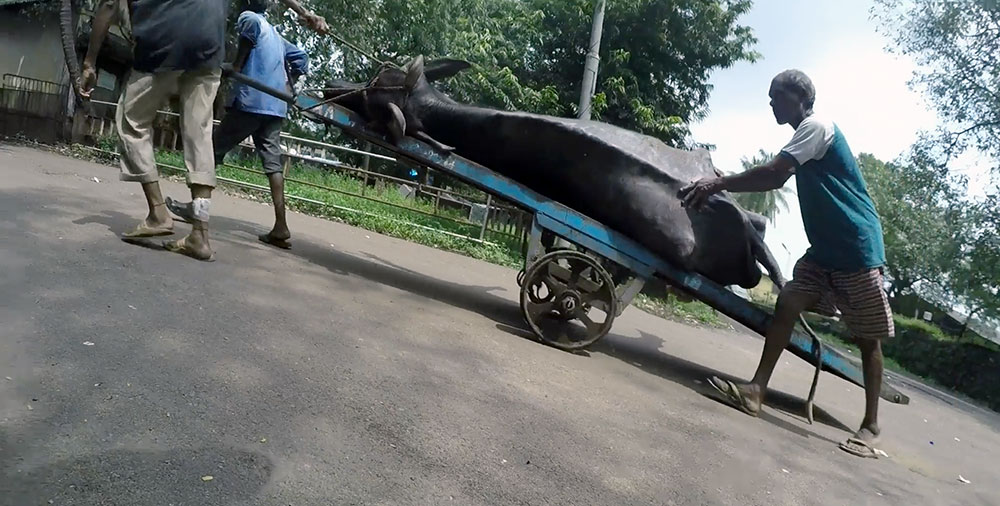
These practices clearly violate India’s 1960 Prevention of Cruelty to Animals Act, as well as High Court and Supreme Court orders that establish slaughterhouse rules. “Every slaughterhouse we visited disregarded these laws,” said Amruta Ubale, Executive Director of Animal Equality in India.
The dairy industry’s global reach
India is the largest dairy producer in the world, supplying nearly a quarter of the global market. Much of this dairy is exported to the U.S.
This investigation highlights the close connection between dairy and meat industries. Once the cows and buffaloes stop producing milk, they’re often sold for slaughter.
Dairy isn’t just about milk, it’s about the killing of animals for their flesh too. These industries harm animals, workers, the environment, and consumers alike. – Amruta Ubale, Executive Director of Animal Equality in India
Ubale warned of public health risks from injecting dairy cows and buffaloes with hormones like oxytocin. These injections are used to stop the animals from withholding milk, a natural response when their calves are taken away. The hormone relaxes their muscles, making milking easier, but it causes labor-like pain and shortens the animals’ lifespan.
Animal cruelty: a worldwide crisis
The cruelty seen in India is far from an isolated issue. Similar abuses have been documented around the world.
In 2019, Animal Equality exposed harsh conditions at Summit Calf Ranch, a supplier linked to Babybel. Newborn calves were left to freeze in subzero temperatures, their bodies tossed into piles. Some calves’ frozen hooves had separated from their legs. Workers were filmed hitting and shoving the calves, while sick animals were left to die untreated.
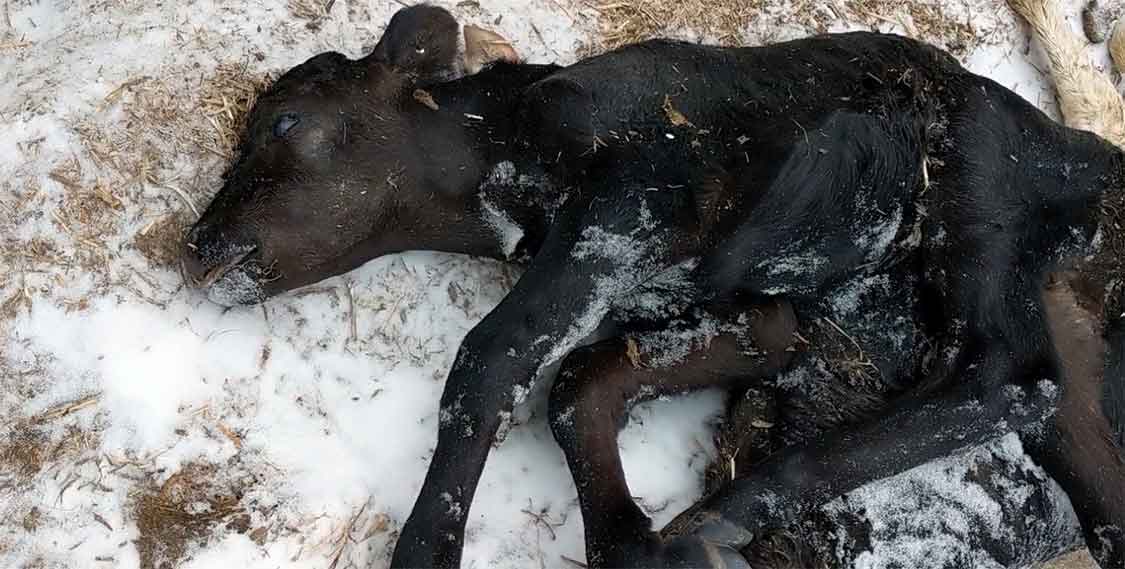
In the UK—at Madox Farm in South Wales—cows were kicked, punched, and hit with metal shovels. The footage was later aired on BBC’s Panorama as millions tuned in to watch.
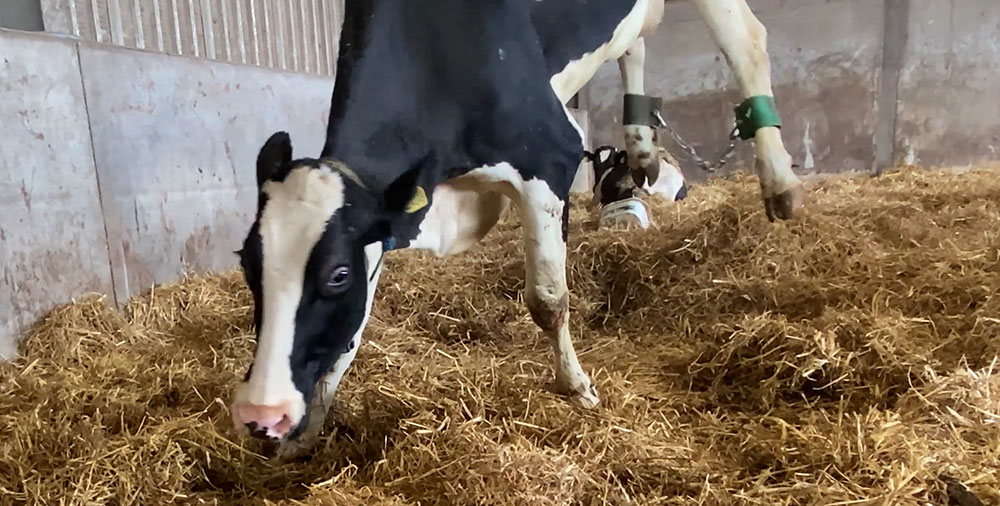
In Northern Italy, an investigation into the buffalo mozzarella industry uncovered animals standing in mud and feces, covered in flies and surrounded by dead animals. Male calves—deemed useless because they don’t produce milk—were left to die from hunger and thirst. Investigators even found a buffalo corpse poorly hidden under straw and manure.

Dairy in India: a legacy of suffering
Animal Equality has been exposing cruelty in India’s dairy industry for years. In one case, workers attempted to force a weak buffalo onto a truck by shoving a stick into her genitals and twisting her tail. When she couldn’t move, they poured water over her nostrils, simulating drowning. In other instances, workers were seen rubbing chilies into animals’ eyes to urge them forward.

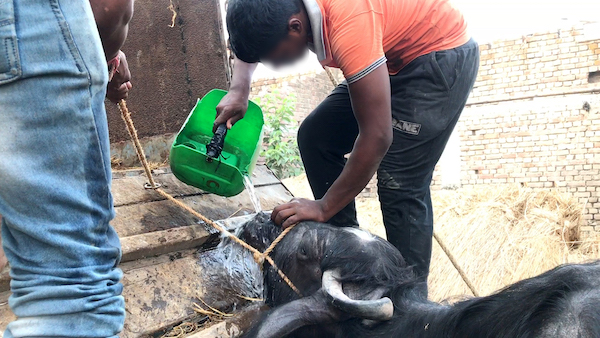
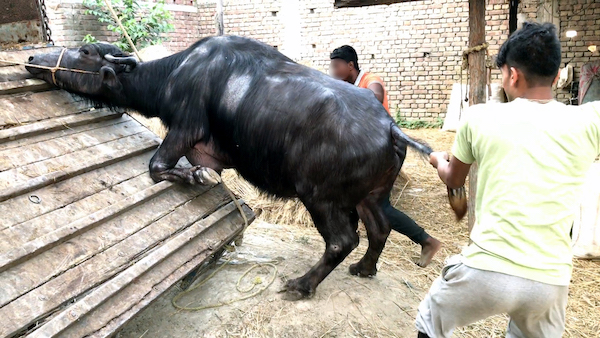
In 2023, Animal Equality partnered with Indian-American actress Richa Moorjani to raise awareness about these abuses. Footage showed newborn male calves separated from their mothers and left to starve because they couldn’t produce milk.
After losing their calves, female cows and buffaloes stopped producing milk. Workers responded by stuffing dead calves with hay and placing them next to the mothers, hoping to trick them into thinking their calves were still alive. This manipulation was an attempt to stimulate milk production.
In other cases, workers tied nets around calves’ mouths to prevent them from drinking their mothers’ milk.
The plant-based solution
These investigations make one thing clear: the dairy industry—both in India and around the world—profits from animal cruelty. As more people learn the truth, they are beginning to rethink their consumption of dairy.
Plant-based alternatives offer a compassionate solution. With options like oat milk and almond-based cheeses, the plant-based industry is growing rapidly, offering cruelty-free choices that are better for animals, the environment, and human health.
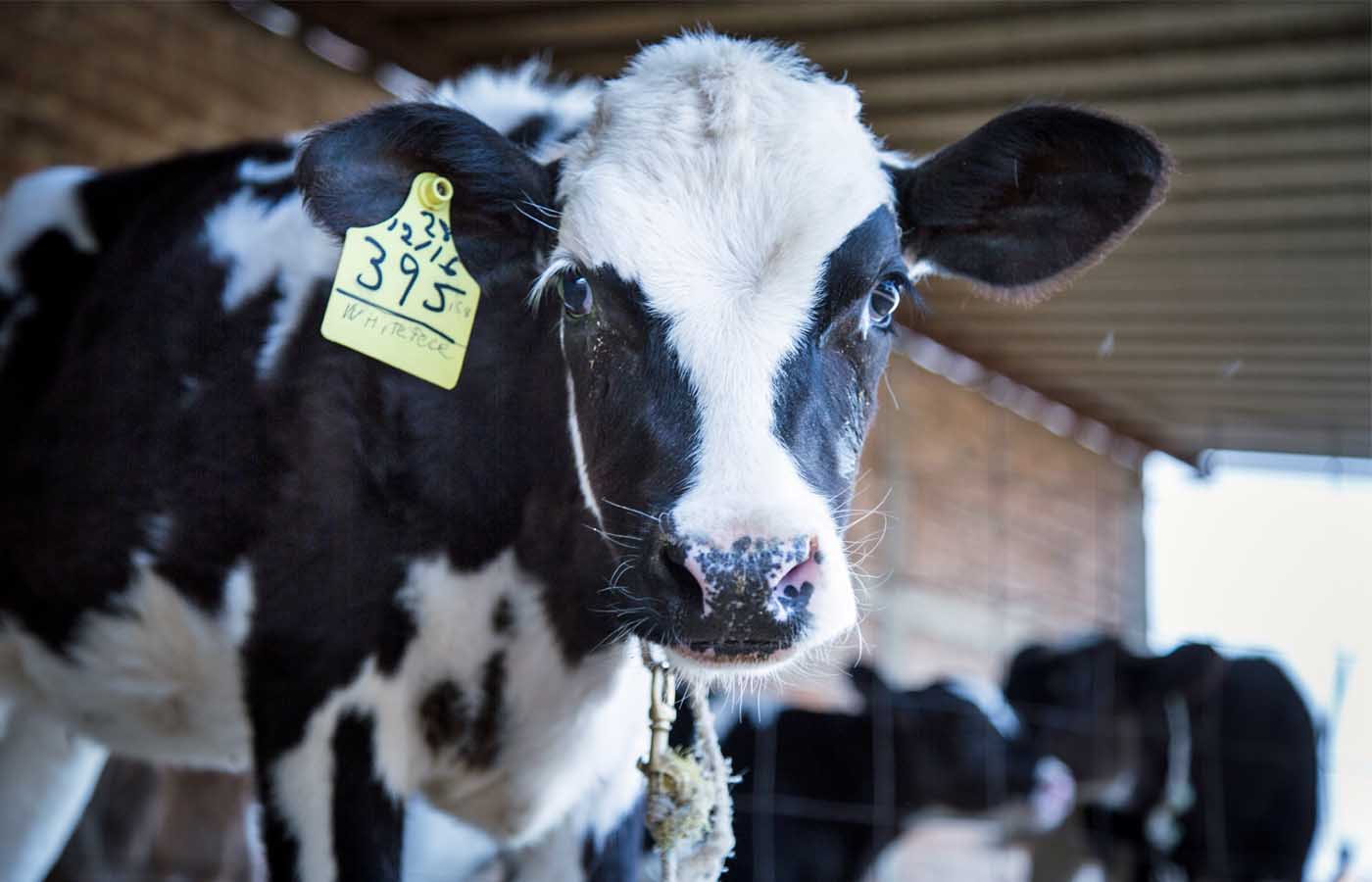
DEFEND MOTHERHOOD
A cow’s maternal instincts foster a gentle bond with her vulnerable calf.
Preserve this tender relationship by choosing plant‑based alternatives to dairy products.
